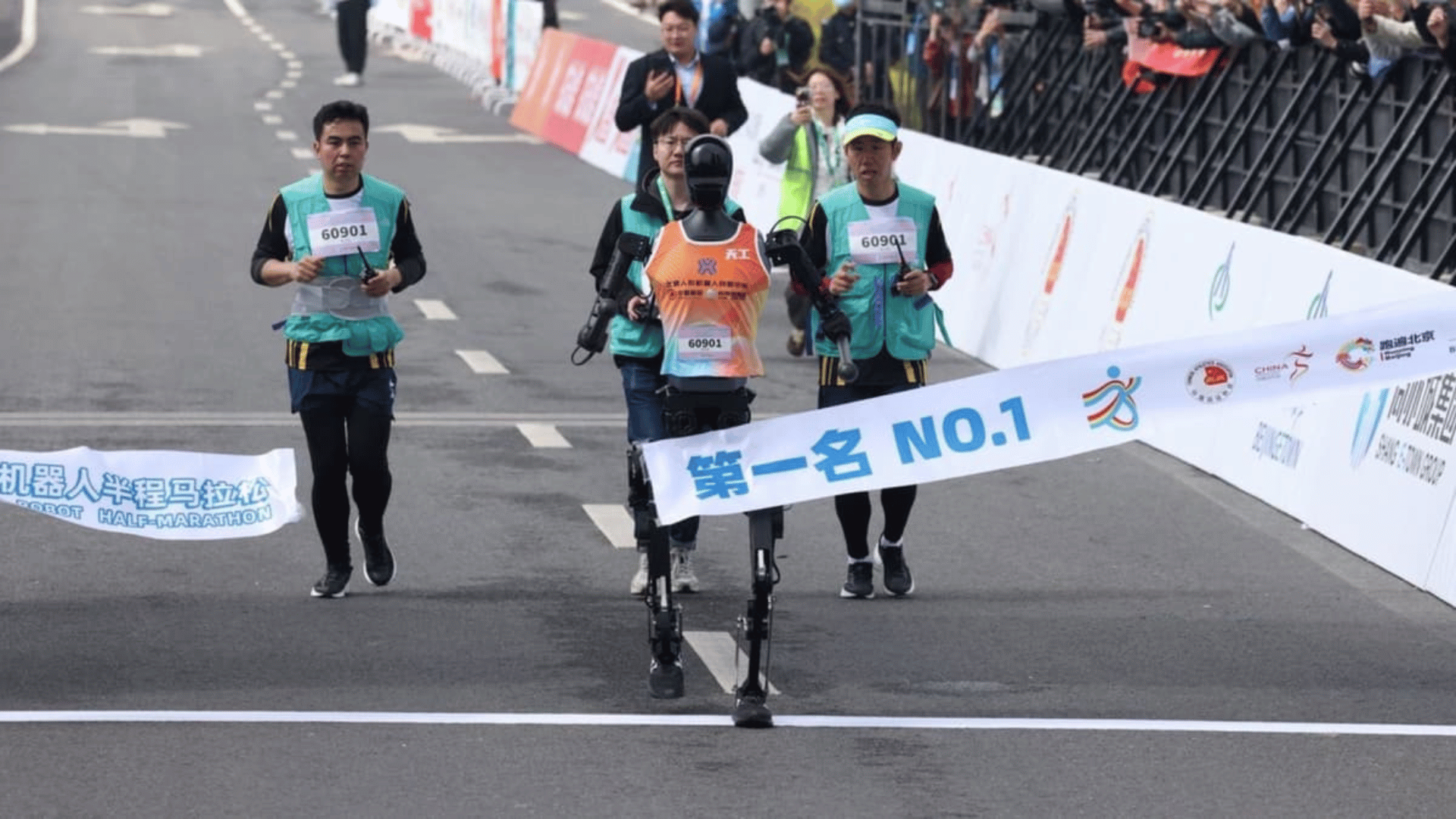Approximately 21 humanoid robots competed with human marathon runners in a 13-mile race on Saturday, April 19th. This is reportedly the first time a human vs. robot marathon has been held.
Human vs. Humanoid

The robot competitors were various sizes, ranging from 3 feet 9 inches to 5 feet 9 inches. Wheeled robots were prohibited from competing, and the race required robots to be able to walk or run like humans.
The robots reportedly performed fairly well, with the winning robot, “Tiangong Ultra,” finishing the race with a run time of two hours and forty minutes. Though this was still slower than the human winner, who finished the race in one hour and two minutes, it was still an impressive feat.
The winning robot was 5 feet 9 inches tall and weighed around 114.6 pounds. It maintained a steady pace of 6.2 mph and achieved a maximum speed of 7.5 mph. Dressed similar to some of the human competitors, the robot sported an orange shirt with its name written on the left shoulder and specialized black running shoes.
The robot’s creator, Tang Jian, who is also the chief technology officer behind the Beijing Innovation Centre of Human Robotics, said that the humanoid’s long legs and onboard software allowed it to perform well. He also stated that the robot’s battery only needed to be charged three times for the duration of the race.
Robot Runners
There were other robots, however, who didn’t perform as well. One robot, for example, fell at the starting line and lay on the ground for a few minutes before joining the race. Another crashed into a railing, knocking over its human operator. Though every robot was accompanied by a human operator, some had to assist the humanoids during the race physically.
Similar to “Tiangong Ultra,” other robots were also sporting various clothes, including running shoes, boxing gloves, and headbands.
The course was specifically designed to test the robots’ physical capabilities. It used a combination of flat surfaces, inclines, and turns in varying directions. With a maximum time limit of 3 hours and 30 minutes, many of the robots’ creator companies tested their entrants for weeks prior to the competition.
“The robots are running very well, very stable … I feel I’m witnessing the evolution of robots and AI,” said spectator He Sishu, who works in artificial intelligence.







